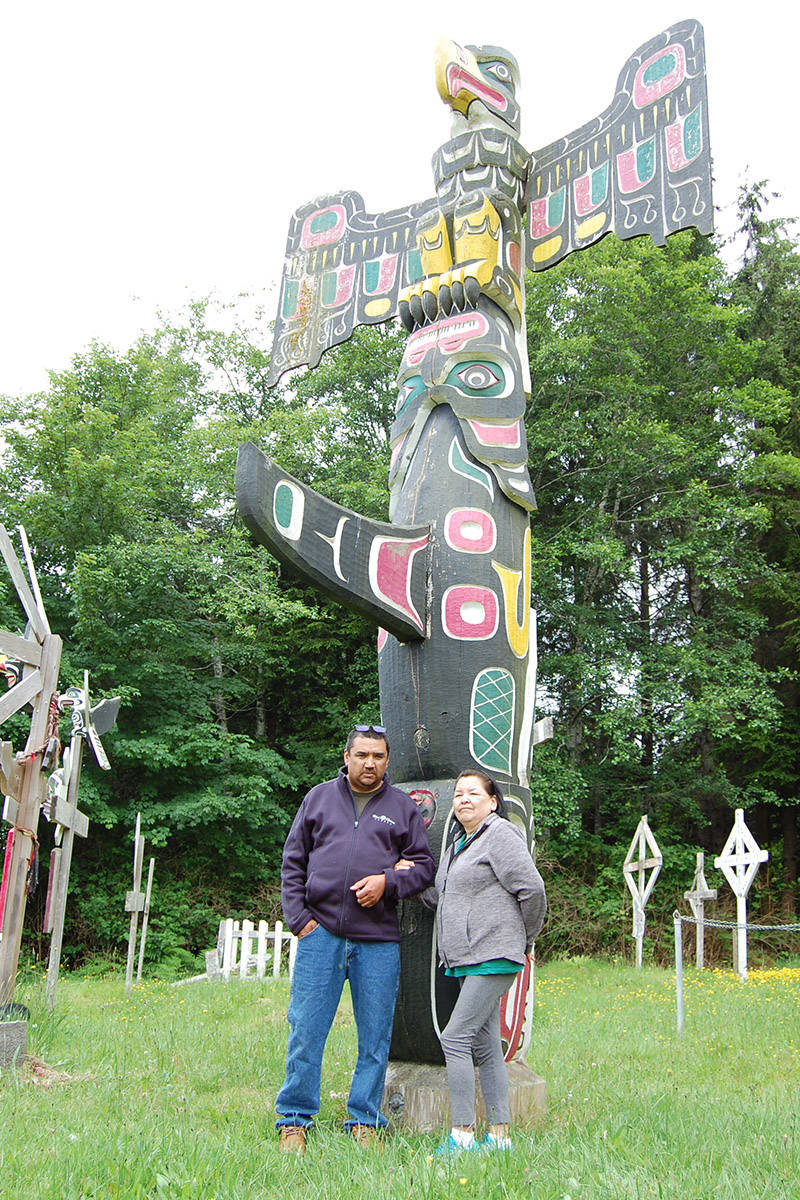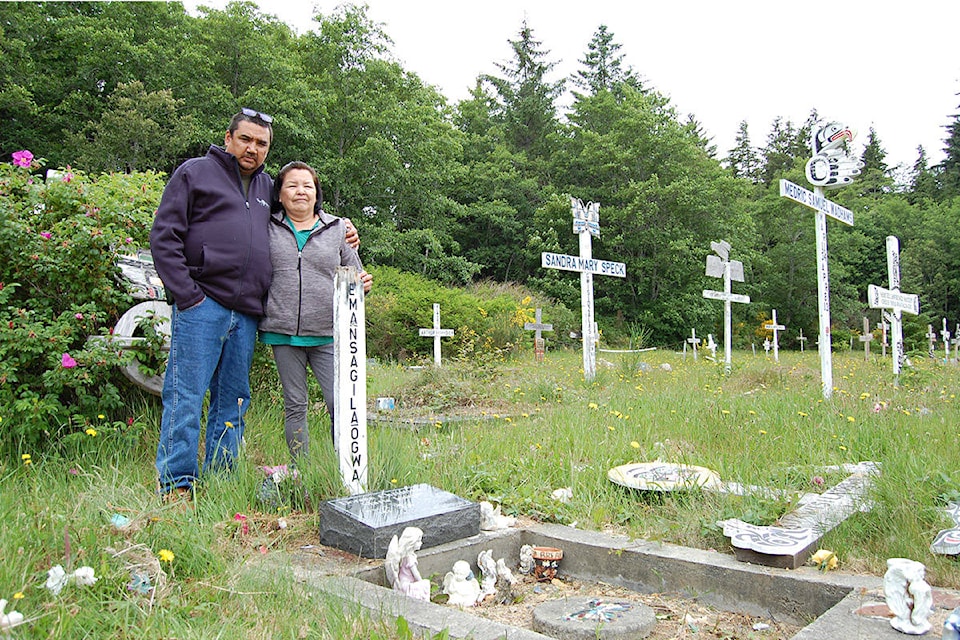North Island resident Denise Nelson counted on her fingers the six relatives that died of fentanyl overdoses last year.
She was with her husband Dean Nelson at the ‘Namgis First Nation burial grounds at Alert Bay, a tiny village on Cormorant Island, northeast of northern Vancouver Island.
READ MORE: First Nations people in B.C. four times more likely to die of an overdose
Their lives have been marked by tragedies they trace back to residential schools and other colonial policies. While neither of them attended residential schools, their close relatives did. The trauma lingers in every Indigenous community, said Denise.
“Every reserve you see has been afflicted by the residential schools,” she said.
She recalled discussing residential schools in Campbell River recently. A non-Indigenous passerby told her “that’s done and over with,” Denise recalled. “I said, you know what? It is not done and over with.”
Her mother was among the estimated 150,000 Indigenous children who attended residential schools in Canada. About 6,000 of them died inside those institutions. The last one closed in 1996 in Punnichy, Sask.
Her mother survived the experience at a school in Port Alberni. But Denise said it turned her mother, who died years ago, into an abuser.
“It doesn’t go away… I was the victim of her wrath,” said Denise, 55, who is originally from Squamish Nation. She recently started attending counselling.
She was in Alert Bay to visit the grave of her daughter, Doreen Joseph. Denise said her daughter died in car accident involving a drunk driver. The cycles of substance abuse and tragedy are all linked, she said.
“It all stems down to residential schools.”
The ‘Namgis First Nation burial grounds in Alert Bay are located near the former site of St. Michael’s Residential School, which was run by the Anglican Church until 1974.
READ MORE: Residential school demolition to help close door on dark period
Indigenous children from across Vancouver Island and as far north as Haida Gwaii were forced to attend St. Michael’s, where they were prohibited from speaking their language. Many students reported physical, sexual and emotional abuse.
The decrepit four-storey brick building was demolished following a healing ceremony in 2015 that brought together hundreds of people.
Former students threw stones at the building, and heavy equipment tore down the school’s front porch.
The school that once loomed over Alert Bay is now an empty field. But the past is close behind, and the intergenerational legacy of residential schools and other colonial policies endures.
“Half of these people went to that school,” said Dean Nelson, who is originally from Gilford Island, as he gestured at the surrounding grave markers. “They got taken away from all their villages.”
ALSO READ: B.C. program to help foster kids enter adulthood a mixed bag of experiences
Many of them would attempt to escape the institutions, which were designed to assimilate Indigenous children. Those who ran away included his mother, who is now deceased.
She went to a residential school in Vancouver, he said, but she ran away after it burned down.
Dean said that most of his uncles and aunts went to residential schools. They still suffer, he said, and many turned to substance abuse.
“People drank trying to kill the pain,” he said. “I drank, thinking about my family, and I drank and drank. And one day I quit… I had to.”
He said that a healing program for Indigenous people in the Campbell River area was shut down a few years ago for lack of funds. Dean and Denise both attended workshops that offered support for people dealing with issues including grief, anger and trauma.
To deal with the grief of lost family, Denise said, she often weeps and washes herself in the Campbell River as medicine.
“That’s how I’ve survived.”
Like us on Facebook and follow us on Twitter

